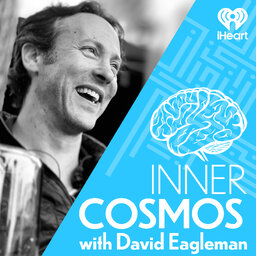Ep8 "How does your brain decide what to buy?"
What’s happening when you stand in the supermarket aisle and stare at the shelf full of options? It may not look like there’s much going on from the outside, but inside there’s a war of networks raging. How is your brain's decision-making influenced by price, emotions, and your group of friends? How would you choose between a nice candle and a chocolate bar in the shape of a computer keyboard? And what does any of this have to do with Starbucks or Tiger Woods or Burger King?
 Inner Cosmos with David Eagleman
Inner Cosmos with David Eagleman


